Simon Fraser may refer to:

Simon McTavish, of Montreal was a Scottish-born fur trader and the chief founding partner of the North West Company. He was a member of the Beaver Club and was known as the Marquis for his pre-eminent position in the fur trade and his refined style of living.
Scots-Quebecers are Quebecers who are of Scottish descent.
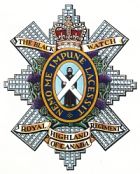
The Black Watch of Canada is a reserve infantry regiment in 34 Canadian Brigade Group, 2nd Canadian Division, of the Canadian Army. The regiment is located at 2067, rue Bleury in Montreal, Quebec, Canada, and is currently commanded by Lieutenant-Colonel R.M. Unger, MMM,CD. The regiment's armoury was designated a National Historic Site of Canada in 2008. They are the senior Canadian-Scottish Regiment.

Clan Fraser of Lovat is a Highland Scottish clan and the principal branch of Clan Fraser. The Frasers of Lovat are strongly associated with Inverness and the surrounding area since the Clan's founder gained lands there in the 13th century.
The 77th Regiment of Foot (Montgomerie's Highlanders) was a Highland Scots Regiment raised in 1757. The 77th Regiment was one of the first three Highland Regiments to fight in North America. During the Seven Years' War, the regiment lost 110 soldiers and 259 were wounded.
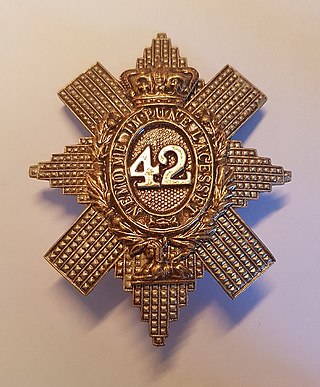
The 42nd Regiment of Foot was a Scottish infantry regiment in the British Army also known as the Black Watch. Originally titled Crawford's Highlanders or the Highland Regiment and numbered 43rd in the line, in 1748, on the disbanding of Oglethorpe's Regiment of Foot, they were renumbered 42nd, and in 1751 formally titled the 42nd (Highland) Regiment of Foot. The 42nd Regiment was one of the first three Highland Regiments to fight in North America. The unit was honoured with the name Royal Highland Regiment in 1758. Its informal name Black Watch became official in 1861. In 1881, the regiment was amalgamated with 73rd (Perthshire) Regiment of Foot under the Childers Reforms into The Royal Highland Regiment , being officially redesignated The Black Watch in 1931. In 2006, the Black Watch became part of the Royal Regiment of Scotland.
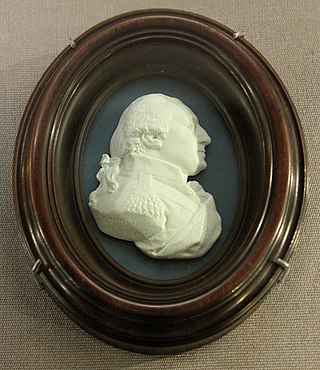
Archibald Campbell Fraserof Lovat, was British consul at Tripoli and Algiers, and later colonel of the 1st Inverness local militia. Upon the death of his brother, Simon Fraser (1726–1782), Archibald became the 20th MacShimidh (chief) of Clan Fraser of Lovat, and sat in the House of Commons from 1782 to 1784.

The 72nd Highlanders was a British Army Highland Infantry Regiment of the Line. Raised in 1778, it was originally numbered 78th, before being redesignated the 72nd in 1786. Under the Childers Reforms it amalgamated with the 78th (Highlanders) Regiment to form the 1st Battalion of the Seaforth Highlanders in 1881.

The 78th (Highlanders) Regiment of Foot was a Highland Infantry Regiment of the Line, raised in 1793. Under the Childers Reforms it amalgamated with 72nd Regiment, Duke of Albany's Own Highlanders to form the Seaforth Highlanders in 1881.
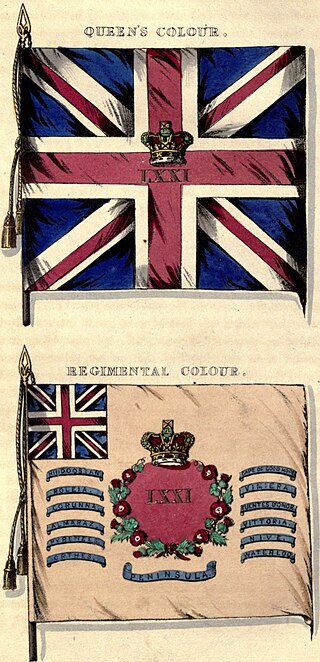
The 71st Regiment of Foot was a Highland regiment in the British Army, raised as the 73rd (Highland) Regiment of Foot in 1777. Under the Childers Reforms it amalgamated with the 74th (Highland) Regiment of Foot to become the 1st Battalion, Highland Light Infantry in 1881.
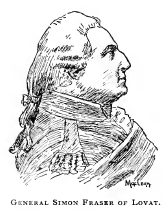
Simon Fraser of Lovat was a son of a notorious Jacobite clan chief, but he went on to serve with distinction in the British army. He also raised forces which served in the Seven Years' War against the French in Quebec, as well as the American War of Independence. Simon was the 19th Chief of the Clan Fraser of Lovat.
The 114th Regiment of Foot (Royal Highlander Volunteers) was an infantry regiment of the British Army from 1761 to 1763.It was raised in October 1761, by Sir Allan MacLean of Torloisk. He was commissioned lieutenant in the 60th Foot Royal Americans at the beginning of the Seven Years' War and was severely wounded at Ticonderoga in 1758. He was then given one of the four NY Independent Companies until he returned to Scotland where he raised the 114th Maclean's Highlanders, or the Royal Highland Volunteers, as their Major Commandant. The regiment was disbanded in 1763.
Four regiments of the British Army have been numbered the 71st Regiment of Foot:
The 71st Regiment of Foot was a British Army regiment of infantry raised in 1775, during the American Revolutionary War and unofficially known as Fraser's Highlanders. It was disbanded in 1786.

Allan Maclean of Torloisk (1725–1798) was a Jacobite who became a British Army general. He was born on the Isle of Mull, Scotland. He is best known for leading the 84th Regiment of Foot in the Battle of Quebec.
The plan of raising a fencible corps in the Highlands was first proposed and carried into effect by William Pitt the Elder, in the year 1759. During the three preceding years, both the fleets and armies of Great Britain had suffered reverses, and it was thought that a "home guard" was necessary as a bulwark against invasion.
The Independent Highland Companies were irregular militia raised from the Scottish clans of the Scottish Highlands by order of the British government between 1603 and 1760 in order to help keep the peace and enforce the law in the Highlands and were recognized as such by the government. The officers of the Independent Highland Companies were commissioned as officers of the British Army but the Independent Companies were not recognized as official regiments of the line of the army. The Independent Highland Companies were the progenitors of the Highland Regiments of the British Army that began when ten Independent Highland Companies were embodied to form the Earl of Crawford's Highland Regiment that was numbered the 43rd Regiment of Foot in 1739.
Seventy-First Township is a civil township in Cumberland County, North Carolina. The township was named from the Scottish immigrants who were descendants of the 71st Regiment of the British Army. The 71st Regiment of Foot was first formed in 1758 from the 2nd Battalion, 32nd Regiment of Foot. Soon after formation the 71st Foot was part of a raid on the French coast at Cherbourg during the Seven Years' War. After taking the fort and destroying the docks the regiment reboarded and returned to England before it took part in a similar raid on Belleisle in 1761. In 1763 the 71st became a Regiment of Invalids before disbanding in 1768. The regiment was raised again at Inverness, Stirling and Glasgow by Lieutenant-General Simon Fraser of Lovat as the 71st Regiment of Foot in 1775. It was intended for service in the American Revolutionary War and was well received in Glasgow: "Their conduct was so laudable and exemplary as to gain the affections of the inhabitants, between whom and the soldiers the greatest cordiality prevailed." The regiment embarked for North America in April 1776, fought in New York at the Battle of Long Island, Brandywine in 1777, Savannah in 1778. The regiment was also present at the Siege of Charleston in March 1780, the Battle of Camden in August 1780 and the Battle of Cowpens in January 1781. It next fought at the Battle of Guilford Court House in March 1781 where one officer of the 71st Regiment claimed that "one half of the Highlanders dropped on that spot." The regiment's last action was at the Siege of Yorktown in September 1781.
Thomas Oswald, younger brother of James Oswald (younger) of Dunnikier, was a British Army officer in the 18th century, engaged in the War of the Austrian Succession and Seven Years' War.









